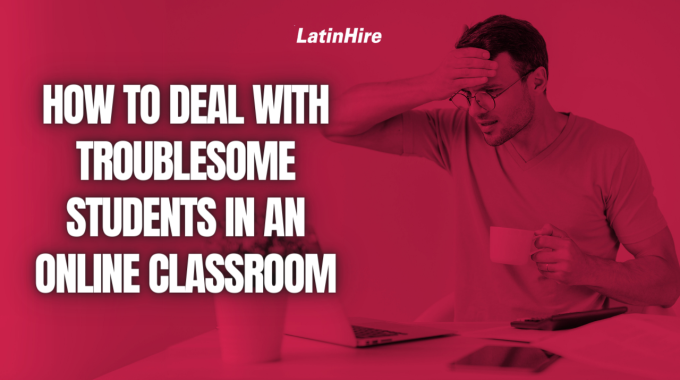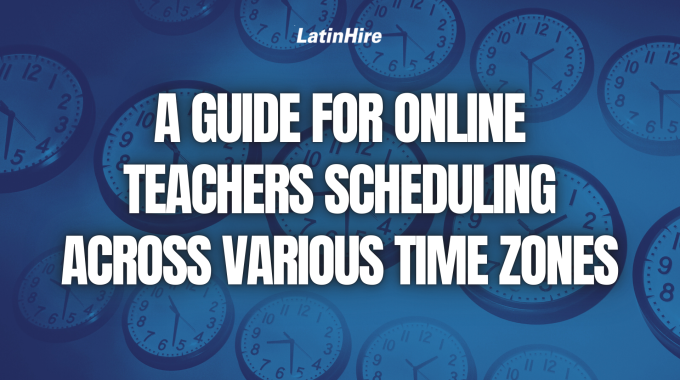Yesterday (March 9, 2025) marked the start of daylight saving time (DST)—a potential headache for…

How to Deal with Troublesome Students in an Online Classroom
Online education has become a crucial part of a student’s learning journey, offering flexibility and personalized attention. However, one of the challenges teachers and tutors face–in both traditional and virtual classroom settings–is managing troublesome students.
It’s particularly difficult to deal with problematic behavior online because the student is not physically in front of you and it’s hard to know if they’re even listening to what you have to say. Whether it’s disruptive behavior, a lack of engagement or disrespect, handling these situations effectively is crucial for building a productive learning environment for all.
Here are 10 strategies to help you manage troublesome students in online classes.
1) Establish Clear Rules and Expectations
Before the first session, set clear rules and expectations. Communicate your guidelines for behavior, participation, and respect. Make sure students understand the consequences of not adhering to these rules. Establishing a structured environment from the beginning helps prevent issues later on. These expectations can be sent to the students’ parents as well so you are all on the same page.

2) Foster a Positive Learning Environment
Creating a welcoming and inclusive atmosphere where students feel valued and respected can help prevent troublesome behavior. A positive environment encourages students to engage and behave appropriately. Show enthusiasm for the subject and praise students for their efforts and achievements. Verbally praise your students when they do something well and encourage them to try again if they don’t get something correct the first few times.
3) Address Issues Privately
If a student is being disruptive or disrespectful, address the issue privately. Publicly calling out a student can embarrass them and escalate the situation. Use private messages or schedule a one-on-one meeting to discuss the behavior. Approach the conversation with empathy and try to understand why the student is behaving that way. Maybe there are some underlying issues that need to be addressed.
4) Use Positive Reinforcement
Encourage good behavior with positive reinforcement, such as encouraging words and virtual awards. Acknowledge and reward students for their participation, effort, and improvement. Positive reinforcement can motivate students to maintain good behavior and stay engaged. For younger students, you can use an online star rewards system or points to track their progress.
5) Stay Calm and Professional
Maintain your composure when dealing with troublesome students. Reacting with frustration or anger can worsen the situation and cause more stress and frustration on both ends, especially when communication can easily be misinterpreted when you’re not standing face-to-face. Stay calm, professional, and patient. Model the behavior you expect from your students and don’t add any more fuel to the fire.

6) Engage Students Actively
Disengaged students are more likely to cause trouble. Keep your lessons interactive and engaging. Use videos, online games, polls, ask questions, and encourage discussions. Switch up the activities over the length of the class so students remain engaged. Active participation keeps students focused and reduces the likelihood of disruptive behavior.
7) Set Up a Support System
Establish a support system for students who may be struggling. Sometimes, troublesome behavior stems from underlying issues such as learning difficulties or personal problems. Offer additional help and resources, and collaborate with parents or guardians if necessary. Create peer groups in breakout rooms where students can support one another with their learning. Often, just having some classmates who are there to help can be a big boost to student motivation.
8) Implement a Behavior Management Plan
Develop a behavior management plan with specific strategies for dealing with disruptive behavior. This plan can include steps such as giving warnings, temporarily muting students during the session, and contacting the parents depending on the student’s age. Consistency in applying these strategies is key.
9) Reflect and Adjust
After dealing with a troublesome student, take time to reflect on the situation. Consider what worked and what didn’t. Adjust your approach if needed, and continuously improve your strategies for managing student behavior. You can keep a journal on student misbehavior and how you dealt with each situation, along with the results. This reflective practice can serve as a guide for future student management.
10) Seek Professional Development
Finally, invest in professional development to enhance your skills in classroom management and student engagement. Workshops, webinars, and courses can provide valuable insights and techniques for handling troublesome students effectively. Also, feel free to talk with more seasoned teachers on their personal strategies for managing students online. There’s a lot that can be learned from just a quick chat!

Do you have any other tips on managing troublesome students in online classroom settings? Share them in the comments below!



